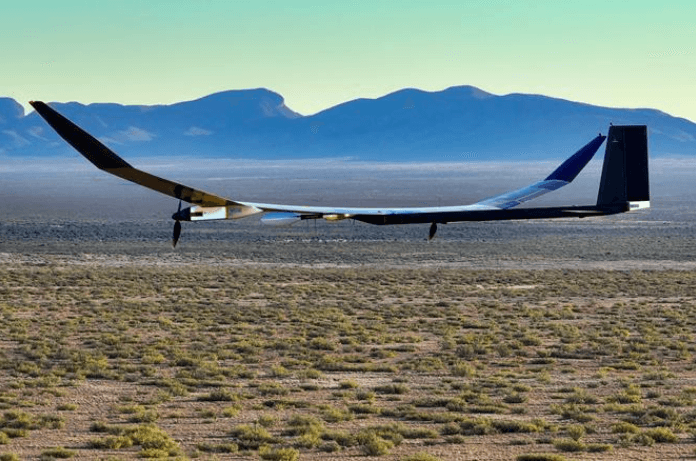A solar-powered aircraft named PHASA-35 is making waves in aerospace. Developed by BAE Systems’ subsidiary Prismatic Ltd, this engineering marvel has the potential to redefine how we approach surveillance, communication, and earth observation. From high-altitude flights to rapid redeployment, the PHASA-35 is setting the stage for a future dominated by sustainable, unmanned aviation. But what makes this aircraft so extraordinary? Let’s dive into the story of this pseudo-satellite and its groundbreaking journey.
A Solar-Powered Milestone in New Mexico
At Spaceport America® in New Mexico, the PHASA-35 soared to incredible heights literally and figuratively. The aircraft achieved a monumental feat by flying for 24 hours, climbing to an altitude of 66,000 feet, and cruising in the stratosphere. Not only did it land successfully, but it was also ready to fly again just two days later, marking a new standard in quick relaunch.
This wasn’t just a test flight; it was proof of the PHASA-35’s exceptional design. With a wingspan of 35 meters and powered entirely by solar energy, the aircraft demonstrated unparalleled endurance and reusability. Such capabilities pave the way for its future role as a High Altitude Pseudo Satellite (HAPS), offering persistent, stable platforms for missions ranging from intelligence to environmental monitoring.
Designed to Operate Beyond Limits
What sets the PHASA-35 apart? Its design allows it to fly above weather disturbances and conventional air traffic, providing unmatched persistence and a stable platform. Whether it’s conducting ultra-long endurance intelligence, surveillance, and reconnaissance has the potential to support civil and military operations, this solar-powered aircraft delivers where others can’t.
During its latest trials, the PHASA-35 carried a software-defined radio developed by BAE Systems’ Digital Intelligence division. This sensor, which weighed over twice as much as its previous payload, showcased the aircraft’s ability to carry heavier, more advanced equipment.
From Hampshire to the Stratosphere: The Next Iteration
Back in the UK, the engineering team at Prismatic’s Hampshire site is already working on the next version of the PHASA-35. This upgraded model will boast double the solar power generation and storage capacity, enabling it to tackle longer and more complex missions starting in 2024.
The enhancements don’t stop there. As part of FalconWorks, BAE Systems’ advanced R&D division, Prismatic is collaborating with partners like Honeywell and the UK Met Office to refine the aircraft further. By leveraging insights from recent flights, the team is ensuring the PHASA-35 will be ready for real-world deployment by 2026.
Why PHASA-35 Matters: Features and Applications
Weighing just 150kg the same as a standard motorbike the PHASA-35 operates as a cost-effective, environmentally friendly pseudo-satellite. Here’s what makes it revolutionary:
- Persistence: Extended endurance in the stratosphere.
- Low Operating Costs: Minimal maintenance compared to conventional systems.
- Global Deployment: Ability to operate anywhere.
- Flexible Payload: Supports a wide range of sensors and can be updated as technology advances.
The potential applications for the PHASA-35 are vast:
- Military Communications and Surveillance
- Maritime Monitoring
- Border Security and Earth Observation
- Environmental and Agricultural Monitoring
A Testament to British Innovation
“This is a real moment of pride for our entire team,” said Bob Davidson, CEO of Prismatic Ltd. “We are committed to continuing to develop the PHASA-35 at pace to make it available for operational activity as soon as 2026.”
“These latest trials draw on a huge amount of collaboration between Prismatic, the wider BAE Systems business, and industry partners, including Honeywell and the UK Met Office,” Dave Holmes, Managing Director of FalconWorks at BAE Systems.
The Future of the Stratosphere
As the PHASA-35 prepares for even more ambitious missions, it’s clear that this solar-powered aircraft isn’t just breaking records it’s rewriting the rulebook for unmanned aviation. By 2026, we could see this pseudo-satellite deployed for real-world applications, delivering on its promise of persistent, cost-effective, and environmentally friendly operations.

